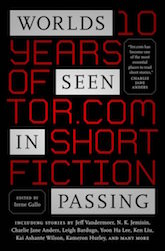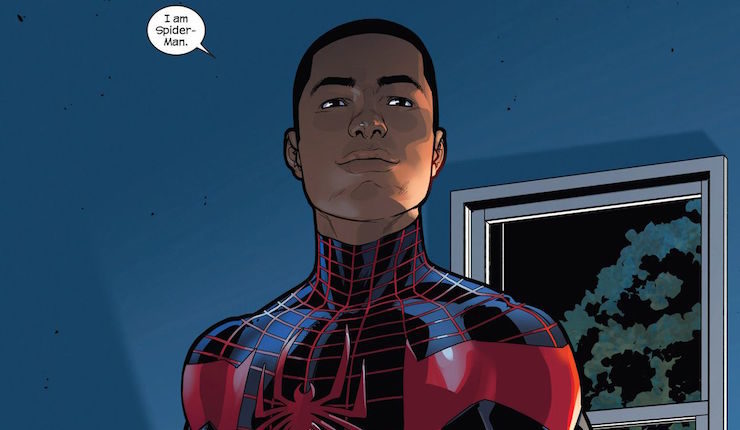In response to my recent article stating why Idris Elba playing James Bond would improve the character, some asked why anyone needs established characters to be portrayed with greater diversity. Why can’t we just be happy with new characters that are like the established characters that better represent a diverse world?
It’s a very common question that seems reasonable. On its face, it concedes that representation matters, that “Representation in the fictional world signifies social existence; absence means symbolic annihilation.” But this response is a dodge, a form of derailment. Yes, obviously creators should tell new stories with new characters—but that is not nearly enough.
New characters don’t answer the central question, which is: Is being white, straight, and male somehow intrinsic to the established characters, the iconic heroes, the role models for millions? I think that the answer is no, and I think that diverse casting is the way to prove that point.
A good example of this is Spider-Man.
In 2010, Donald Glover said he wanted to play Peter Parker in the then upcoming Amazing Spider-Man, and asked, “does Spider-Man have to be white?” There are, after all, plenty of poor nerdy kids in Queens being raised by their aunts who are people of color. An online campaign to get him the part failed but it (and a winking reference on Glover’s show Community) inspired Brian Michael Bendis to create Miles Morales, the black Puerto Rican Spider-Man currently headlining the comic Spider-Man.
Now, Miles is a great character and I’m glad he exists. Donald Glover played Miles on Ultimate Spider-Man: Web Warriors (as well as Miles’s uncle in Spider-Man: Homecoming) so he’s gotten to play a Spider-Man. But there’s the problem: Miles is a Spider-Man, he’s still not Spider-Man: that is, he’s not the character one thinks of when one hears “Spider-Man,” and he will never be Spider-Man unless Peter Parker goes away entirely for like a decade. And maybe not even then. So the creation of Miles Morales doesn’t and can’t answer the question, “Does Spider-Man have to be white?”
If anything, the existence of Miles Morales suggests that Peter Parker can’t be black. Since 2011, a black kid in the costume signifies that this is definitively not Peter Parker, not the Spider-Man everyone expects. This shock reveal is used to that exact effect in both Miles’s first appearance and the teaser of Spider-Man: Into the Spider-Verse. And other versions of Spider-Man who are Indian and Japanese who are definitively not Peter Parker mean that Spider-Man, the main Spider-Man, can’t be from those backgrounds, either.
Creating different versions of Spider-Man who are not white does not prove, cannot prove, that Spider-Man doesn’t have to be white—but casting an actor of color absolutely would, and to be super duper clear, Spider-Man does not need to be white.
Yes, Peter Parker was white in 1962 when Stan Lee and Steve Ditko created him, and it would be weird if he were suddenly, say, Latino in Amazing Spider-Man #801 when he was white in the 800 issues before that. However, every single new movie, TV show, cartoon, and video game has been a chance to rethink the character, keep what’s essential, and adapt everything else to fit the times.
So Spider-Man changes constantly and dramatically. Every new version of Peter Parker adjusts his age, his dating status (is he single, engaged, married, or magically divorced?), and his job (is he a high school student, a photographer, a teacher, scientist, or a CEO?). These are all drastic changes that radically affect Peter’s history, how he’s treated by society, and what personal problems he faces. Why can’t his race change too?
The only objection, the only objection, one could have is racism. It is the literal definition of racism to believe that Spider-Man possesses essential characteristics by being white that would be lost if he were another skin color. And it is frankly stupid to think that a black actor can’t play a character usually portrayed as white but it’s no big deal for a tiny 19-year-old like Tom Holland to play a divorced CEO of an international tech conglomerate born in the ’80s (which Peter was, in the comics, at the time Holland was cast). Both casting choices require rethinking who Peter Parker is, and both are opportunities to explore new perspectives while keeping the fundamental core and heroism of Spider-Man intact.
It’s also ridiculous to object when we’ve seen so much evidence that diversely recast and reimagined characters work all the time. We know that Nick Fury can be black, as can Jimmy Olsen and Johnny Storm. Sue Storm can be Latina. Aquaman can be Hawaiian. Superman can be Japanese. Hikaru Sulu can be gay. The Doctor can be a woman. And each diverse recasting counters a bigoted narrative that only straight white men can be the hero, that being straight, white, and male is somehow essential to their heroism, and that anyone else can at best be a pale imitation.
Buy the Book


Worlds Seen in Passing: Ten Years of Tor.com Short Fiction
Now, it’s important to note that casting an actor of color to play a traditionally white character is fundamentally different than casting a white actor to play a character of color. A black actor can play James Bond. A white actor cannot, cannot, can not play Black Panther.
First off, as much as Spider-Man and James Bond and most white characters have no connection to a “white culture”, almost every character of color’s ethnicity is an important part of their identity—in part because so many of them were created as a challenge to an overwhelmingly white cultural landscape. Jack Kirby and Stan Lee created Black Panther as a conscientious effort to add diversity to the Marvel Universe. (It’s not a coincidence that he’s introduced two issues after Wyatt Wingfoot, the Human Torch’s Native American roommate.) Therefore, Kirby and Lee made a character who is the king of an insular African nation, someone who could not be anything other than African.
Secondly, minorities have been and still are shut out from wide representation, and there are so few roles, and even fewer starring roles, for actors of color in Hollywood that it dramatically reduces representation every time a role that could have been played by a POC is given to a white actor. As I said before, lack of representation is symbolic annihilation. So even if an Asian character could arguably be played by a white actress (*cough ScarJo cough*), it does literal harm—both emotionally and in a practical financial and professional sense—to whitewash these characters, costing actors of color a job and robbing audiences of color of a chance to identify with the heroes presented.
This is why recasting established characters is important. This is why it’s not enough to create ethnically diverse knock-offs and hope for the best. When we read stories, we don’t want to know that we could be people who are sort of like our heroes. We want to know, we need to know, that our heroes could be just like us.
Steven Padnick is a freelance writer and editor. By day. You can find more of his writing and funny pictures at padnick.tumblr.com.










